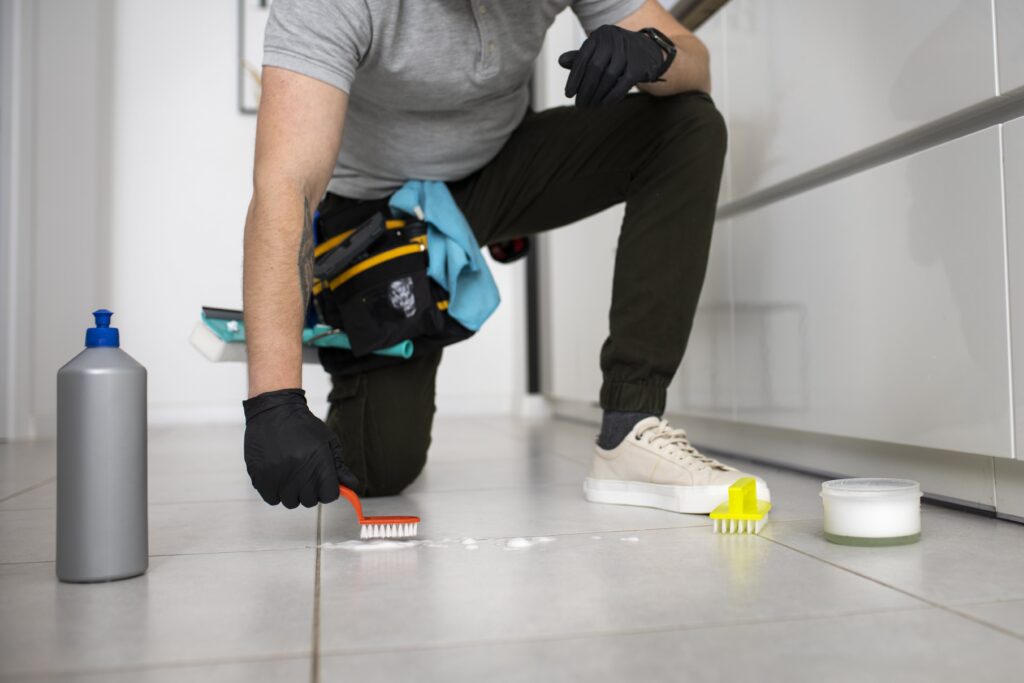Maintaining your tile and grout properly is essential for keeping your home looking fresh and clean. Over time, dirt, stains, and mildew can build up in the grout lines, making even the most beautiful tile floors or walls look dingy. In this article, I will share some practical tips and tricks that I have learned over the years to help you keep your tile and grout in top condition. When done right, maintaining your tile and grout can be an easy task that significantly enhances the lifespan of your flooring.
Understanding Tile and Grout
Before diving into the maintenance tips, it’s important to understand what tile and grout actually are. Tile is typically made of ceramic, porcelain, or stone, while grout is a mixture of water, cement, and sand used to fill the spaces between tiles. Grout can be quite porous, which is why it tends to absorb stains and dirt. This is where proper maintenance comes into play.
The Importance of Regular Cleaning
One of the most crucial steps in maintaining your tile and grout properly is regular cleaning. A quick sweep or vacuum can help remove loose dirt and debris. However, mopping with a suitable cleaner is key to eliminating grime and preventing buildup. Avoid using harsh chemicals or acidic cleaners, as these can damage both the grout and the tile.
Choosing the Right Cleaning Solutions
- For daily cleaning: A mixture of warm water and a few drops of dish soap can do wonders.
- For deep cleaning: Consider using a mixture of baking soda and vinegar. Apply it to the grout, let it sit for a few minutes, then scrub with a brush.
- For tough stains: Hydrogen peroxide or a commercial tile cleaner can be effective. Always test it on a small area first.
Grout Sealing: An Essential Step
After cleaning your tile and grout, sealing the grout is an important step that many homeowners overlook. Grout sealer acts as a protective layer, making it easier to clean and preventing stains. It’s recommended to seal your grout every 6 to 12 months, depending on the type of grout and the amount of traffic in the area.
How to Apply Grout Sealer
- Make sure your grout is completely clean and dry.
- Using a small brush or applicator, apply the sealer evenly along the grout lines.
- Allow the sealer to sit for the recommended time, usually around 10-15 minutes.
- Wipe off any excess sealer from the tile surface with a clean cloth.
- Let it cure for 24 hours before using the area.
Dealing with Mold and Mildew
Mold and mildew can be persistent problems, especially in humid areas like Miami. If you notice black or green spots on your grout, it’s time to take action. Regular cleaning can help prevent this, but if it does appear, there are several methods to tackle it.
Natural Remedies for Mold and Mildew
- Baking soda and vinegar: Create a paste with baking soda and water, apply it to the affected areas, and spray with vinegar. The fizzing action helps lift the mold.
- Tea tree oil: A few drops mixed with water in a spray bottle can be an effective natural mold killer.
When to Call a Professional
If the mold and mildew persist despite your best efforts, it may be time to call in a professional. They have access to industrial-grade cleaning products and equipment that can restore your tile and grout to its original condition.
Preventative Measures
Prevention is always better than cure. Here are some practical tips to keep your tile and grout looking new:
- Use doormats: Place doormats at entry points to reduce dirt tracked into your home.
- Wipe spills immediately: This can prevent stains from setting in.
- Regular maintenance: Set a cleaning schedule that works for you. Consistency is key!
FAQs About Tile and Grout Maintenance
How often should I clean my tile and grout?
It’s best to clean your tile and grout at least once a week, but high-traffic areas may need more frequent attention.
Can I use bleach on grout?
While bleach can be effective for whitening grout, it can also weaken the grout over time. Use it sparingly and always dilute it with water.
What should I do if my grout is cracked?
If your grout is cracked, it’s essential to replace it. Cracked grout can allow moisture to seep in, leading to mold growth and further damage.
How do I know if my grout needs sealing?
You can perform a simple water test: sprinkle water on the grout lines. If the water soaks in, it’s time to reseal.
Final Thoughts on Maintaining Your Tile and Grout
Taking the time to maintain your tile and grout properly can save you money and hassle in the long run. With some regular cleaning, sealing, and preventative measures, you can enjoy beautiful and durable surfaces in your home. Remember, a little effort goes a long way in preserving the beauty and integrity of your tile and grout!






